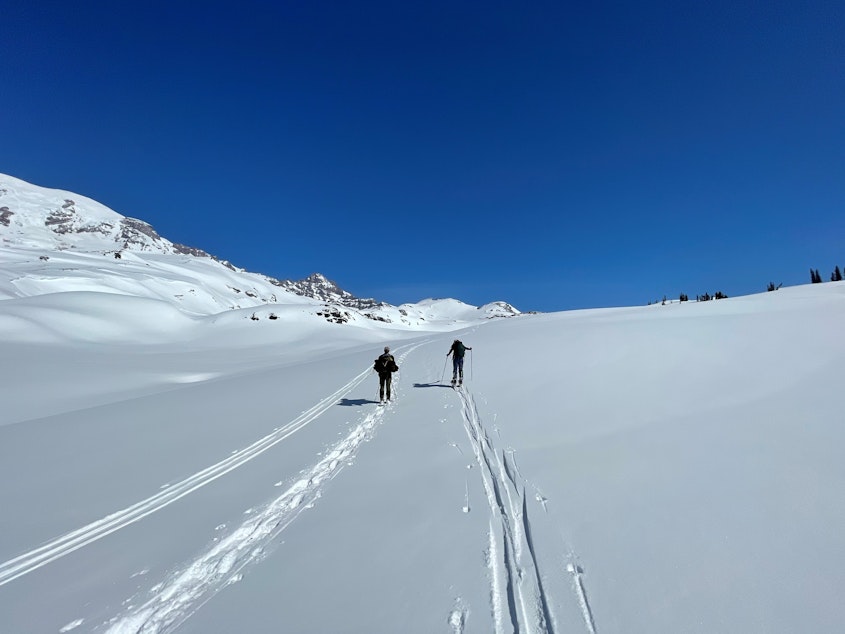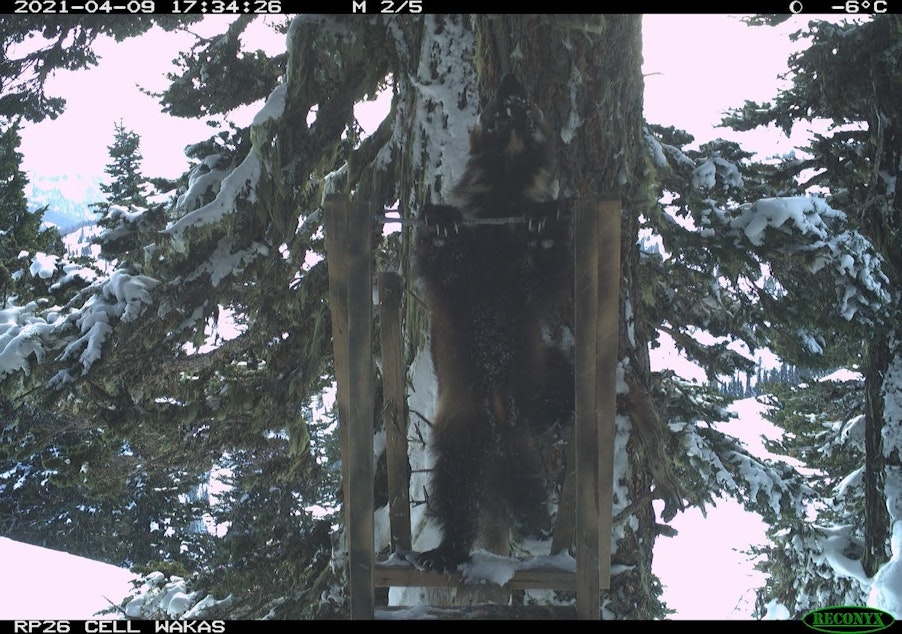True grit: the wild wolverine

For the first time in 100 years, wolverines are back in Mount Rainier National Park. How did they get there?
In the summer of 2020, there was some big news for wildlife in the pacific northwest. In the wild spaces of Mount Rainier National Park, a female wolverine was discovered along with two babies known as kits. It is believed that these tenacious predators haven't been in the park for over a century. The wolverines were back.
But there is still a lot we don’t know about this very small, elusive population. Wolverines are in a family of weasels called Mustelids - minks, otters, badgers. But when you hear the word weasel you don’t think of an animal that can chew through a log, drive a bear from a kill, and take down prey many times bigger than themselves. They’ll take tundra, boreal forests, or mountains - as long as they're left alone. Which can make studying them very difficult.
Dr. Jocelyn Akins is a wolverine biologist and founder of the Cascade Carnivore Project. She has slogged and toiled through some of the most rugged terrain on earth, setting up wildlife cameras all over the high country in the hopes of proving that wolverines had returned. Eventually, after years of searching, Jocelyn was rewarded with the first images of a mother and her young inside the park.
“So we have these monitoring stations where we can identify individual Wolverines based on photographs,” Jocelyn told me. “And so we found she came to one of those stations and she just kept coming back. And we could tell from her unique throat and chest markings or chest blaze that she was not a Wolverine we’d ever seen down here before.”
Researchers named her Joni.
Sponsored

“It's completely possible that we're going to watch this population blink out,” added Jocelyn. “So when you see a female, you know, there's hope. It's the best hope you can have for this population.”
For 15 years now, Jocelyn has been on a quest to witness and document the return of wolverines to the mountains of the south cascades after a long absence. But the fact a female with youngsters is expanding into new territory could be a sign that the population is making a comeback. And it seems like there’s no creature more determined. This is a story about toughness, tenacity, and resilience, not just of the wolverines, but of the woman determined to study them.
THE WILD is a production of KUOW in Seattle in partnership with Chris Morgan Wildlife and Wildlife Media. It is produced by Matt Martin and edited by Jim Gates. It is hosted, produced and written by Chris Morgan. Fact checking by Apryle Craig. Our theme music is by Michael Parker.
Follow us on Instagram (@thewildpod) for more adventures and behind the scenes action!
Correction, 9:36 a.m., 3/31/2022: An earlier version of this story misspelled the last name of Dr. Jocelyn Akins.





